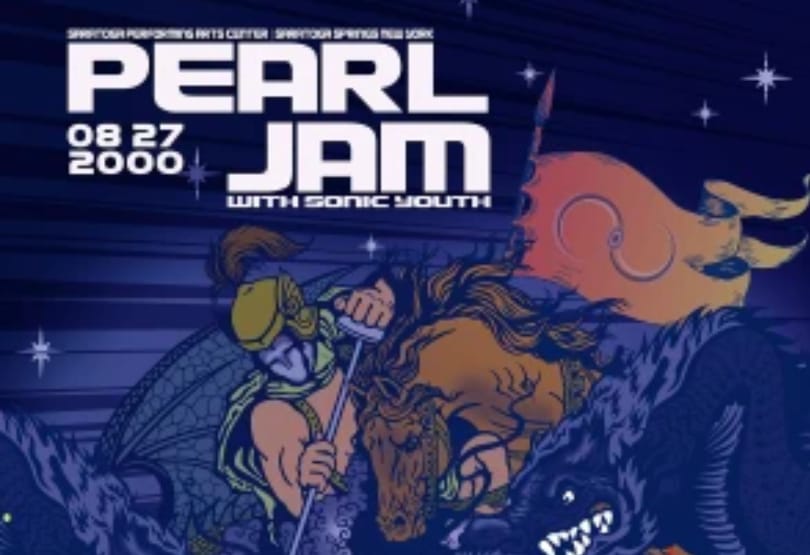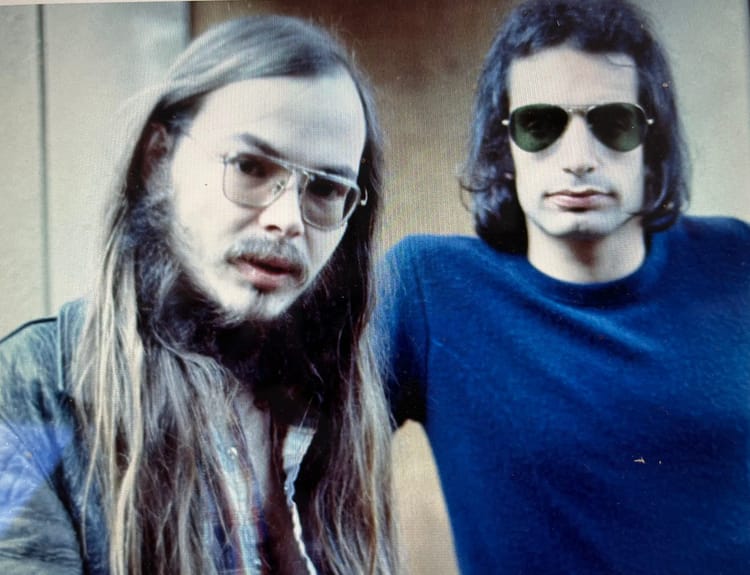Sonic Youth, pt. 3: Anthony's Album Guide

Part 1 is here. Part 2 is here. My handy-dandy super-subjective rating scale is explained here.
In The Fishtank 9 EP (2001) 6
Murray Street (2002) 8
Sonic Nurse (2004) 9
Hidros 3 (2004) 4
SYR6: Koncertas Stan Brakhage Prisiminimui (2006) 5
Rather Ripped (2006) 7
The Destroyed Room: B-Sides And Rarities (2006) 6
SYR7: J’accuse Ted Hughes (2008) 6
Hits Are For Squares (2008) 6
SYR8: Andre Af Sonic Youth (2009) 5
The Eternal (2009) 8
SYR9: Simon Werner A Disparu (2011) 6
Spinhead Sessions 1986 (2016) 6
In/Out/In (2022) 5
The crankiness among underground Goldilockses who didn’t want their Sonic Youth too formless or too predictable, exemplified by Pitchfork’s 0.0 review of NYC Ghosts & Flowers, didn’t seem to faze the band much. Continuing to have it both ways, they opened a Pearl Jam tour in 2000 and took the experimental compositions of Goodbye 20th Century to Europe in 2001. Though the 9/11 attacks were just blocks from their studio, delaying completion of a new album, the band performed the new songs in the months that followed at benefits, college gigs, and the first stateside All Tomorrow’s Parties festival, which they curated.

(In The Fishtank 9 is a pleasant rumble of free-jazz, the cover co-crediting The Ex and The ICP, aka The Instant Composers Pool. If just one Juggalo bought it by mistake, it was more than worth it. Sadly, the slap bass is courtesy of Luc Ex, not the absent Kim Gordon.)
Murray Street was released in the summer of 2002, Jim O’Rourke shifting from art-minded collaborator to the band’s official bassist (Gordon already playing six-string for years). Those who hadn’t already heard the material were likely surprised O’Rourke’s presence led not to further edge, but an increase of groove. The band had never sounded more like Television than on the opening trio, all warbled tenderly by Thurston Moore in his best Verlaine (albeit with more frantic strumming and feedback than their Manhattanite predecessor would indulge). Lee Ranaldo matches Moore’s loveliness with “Karen Revisited” - not redux of A Thousand Leaves’ “Karen Koltrane,” but a spirited sequel! With an extended noise outro! Unfortunately, two relative toss-offs (albeit, one featuring skronk legends Borbetomagus) dilute the mood a bit before Gordon’s epic, anxious coda, “Sympathy For The Strawberry.” Some still grumbled about the dream of the ‘90s getting lost in their aging artsy-fartsiness, but Sonic Youth’s transformation into an avant-classical Grateful Dead was gaining acceptance.
Workingman’s Youth in 2002.
(Hidros 3 finds the band buzzing amps and bending strings on stage with saxophonist Matt Gustafson and other noisy friends not on the Geffen payroll. Kim Gordon is audibly present, though, doing her best Ella Fitzgerald. Which is pretty terrible.)
Partially worked out on the road, Sonic Nurse is my vote for Best Sonic Adults album. It may be their only album that picks up steam as it goes on, the opening numbers less pop peaks than setting the stage for highlights to come. The songs average around five-six minutes each, but an unprecedentedly lithe bottom courtesy of O’Rourke and Steve Shelley helps static as in noise rarely mean static as in motionless. Keeping them from turning into Wilco is Kim Gordon. Her condescending mockery of Mariah Carey suggests “Kool Thing” might have been intersectionally astute by accident, but I still get a kick out of the unapologetic crankiness, and the bewitchingly fatigued “I Love You Golden Blue” is Gordon’s first song in over a decade that’s melodic enough for Carey to cover.
Sonic Youth - not too loud for Leno!
(SYR6, with percussionist Tim Barnes, might work when joined by the silent Stan Brakhage films it accompanied live, though I wouldn’t assume even those justify the wordless moans.)
With most finally accepting SY’s mature prerogative, Rather Ripped rewarded fans with their most spirited openers since Daydream Nation. Moore said he conceived the album as their Parallel Lines, but the loss of O’Rourke thins out the sound, and - instead of covering The Nerves twice - we get even more lyrics than usual from Moore about the temptations of sexy angel goddesses (foreshadowing!). Even if Blondie is beyond them, Ripped isn’t a bad sequel to Goo (which was also rather front-loaded).
Hey, that floppy-haired bassist is only tangentially connected to Drag City! Sell outs!
(SYR7 features a twenty-minute drone unappreciated by the UK press at the first ATP festival in 2000, and a long instrumental meant for a fashion show. The B is so ruminative and modest, it could almost be Yo La Tengo. I would also pay good money to hear Georgia Hubley attempt Gordon’s sing-song shtick as heard on the A. I don’t hate either side, but my couch is a lot comfier than a festival or a fashion show.)
Despite Rather Ripped’s pretensions to pop, Geffen/Interscope/Universal and the band finally parted ways in 2006. Wrapping up what would be the music industry’s most remarkable indulgence of indie rock if not for the Flaming Lips (still on Warner!) was The Destroyed Room, a jam-happy rarities collection, and, in 2008, a Starbucks distributed best-of with celebrity liner notes (the Lips chose “Expressway To Yr Skull”). The coffee chain, coincidentally or not, gave up on releasing music months later.
Only true venti-heads know about this track.
(SYR8 presents the sounds Sonic Youth made with Gustafson and Japanese noise artist Merzbow at the Roskilde Festival in 2005. It’s an hour long, sounds like it was fun to watch, and was reportedly followed by Black Sabbath doing “N.I.B.” Why is Kim the only one who ever picks up a mic at these things? Lee doing def poetry jam would have been more novel at this point.)
Funnily enough, the no-longer-major band signed to Gerard Cosloy’s Matador, Cosloy’s Homestead having lost the band to SST over twenty years earlier. The Eternal, with Mark Ibold of Pavement and Free Kitten on bass, came after the band revisited Daydream Nation in full on tour, and you can tell that ‘80s spazz-punk energy was fresh in mind. A third of the album features shared lead vocals, and some of the guitar riffs sound perversely close to standard tuning. Coming an unprecedented three years after the last studio full-length (and unintentionally their last to date), The Eternal has a casual, shaggy amiability that’s both fitting in terms of where they were (Pavement’s bassist, Pavement’s label) and ironic in terms of where they’d soon be. It was also their first album to reach the US Top 20, confirming people still bought Sonic Youth albums in 2009, if few else’s.
Sigh. I miss them.
(SYR9 is the soundtrack to a French thriller about missing teenagers. I’d definitely watch it on a streaming site, not the least because it’s funny to imagine French late millennials wandering around to jagged, ominous Sonic Youth instrumentals. Relatedly, if you think 21st century SY albums never got ominous enough, check this thing out.)
The band came to an end in the most parasocially bummer way possible in 2011, when everyone (including Gordon) learned just how little fantasy went into Moore’s lyrical erotica. While middle-aged, long-married dads living a romantic double life is a common cliche, most of those guys don’t have a collaboration with their wife and Yoko Ono in the pipeline. Gordon eventually went on a merited Ain’t This Some Bullshit promo tour for her memoir, Moore joining a black metal band and complaining about the “gender fascism” of his critics. And with that, aging hipsters switched their heterosexual romantic ideals to Yo La Tengo and Low.
Mom & Dad grit it out for Yoko in 2012.
(I’m ignoring the many archival live releases that aren’t very special improv nights, but I will give a shout-out to Spinhead Sessions 1986, culled from the same recordings that gave us the Made In USA soundtrack - from pt.2, remember? - but more cohesive an EVOL-esque mood piece.)
Walking away from the band with the least musical and emotional baggage, Lee Ranaldo immediately began releasing full-lengths of endearing bohemian dadrock. Gordon first kept things experimental with the duo Body/Head before launching a solo career with cool young producer Justin Raisen. Their latest collaboration just got two Grammy nominations! I guess she’s like the ‘90s Yoko of the ‘20s? I’ve heard Moore’s solo career has some winning moments too, though you can’t blame me for not trusting the guy. I’m a little sad Steve Shelley hasn’t played on a Kim Gordon album, as this undercuts his Ringo status. Just this month, the three dudes jammed on stage together while Gordon was at a Dinosaur Jr concert on the other side of the country. Considering those Grammy nominations, I doubt she’s desperate to make the next meet-up. But who knows? Maybe if they become grandparents.
They could call this Seated Youth.
(You’d think not existing for over a decade would keep Sonic Youth from getting to record for the latest in cool labels, but Three Lobed put out five tracks of ‘00s psychedelia from the vault in 2022 as In/Out/In. I must once again ask why only Kim “sings” on this shit. Did she get bored? Were the guys too busy humping amps?)
Sonic Nurse is at 80 on my Top 300 Albums of All Time. I'm telling you this because I've found people are more inclined to discuss and share reviews if there's a quantitative element at the top or bottom they can easily debate. Prove me right!
All acclaim, intrigue and annoyance can be sent to anthonyisright at gmail dot com.




